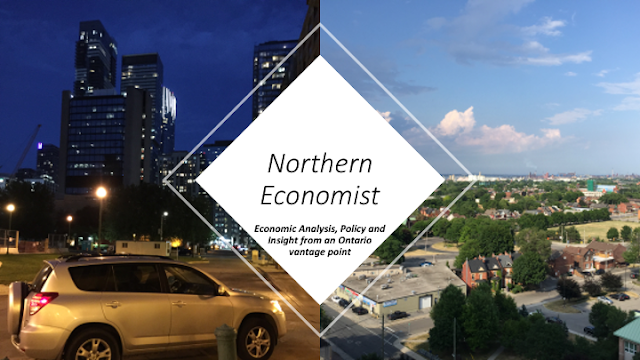The Ontario government presented its budget yesterday and given there will be an official election call any time, one is left to conclude that the budget is at best an aspirational document of what the government might like to do if re-elected in June. Despite what currently seems to be a boom period in the Ontario and Canadian economies, it remains that given the volatility of the global economy, Finance Minister Bethlenfalvy’s reluctance to explicitly state whether he would re-introduce the exact same budget if re-elected is understandable. After all, four or five months from now, the fiscal and economic ground may have shifted yet again.
Figures 1 to 3 provide some material to summarize the budget. Figure 1 shows that total revenues are projected to rise from $173.6 billion in 2021-22 to $196.9 billion in 2024-25 while expenditures (net of the contingency reserve) are projected to rise from $187.1 billion to $203 billion. Once the contingency reserves ($ 1 billion in 2022-23 and $1.5 billion in each of the subsequent years) are factored in, the deficit is expected to be $19.8 billion in 2022-23 and should decline to $7.6 billion by 2024-25.
Figure 2 plots the average annual growth rate of assorted revenues and expenditures over the period 2022-23 to 2024-25. Own source revenues are expected to grow an average of 5.6 percent and total revenues at 4.3 percent while total expenditures will grow at only 2.8 percent. Thus, projected revenue growth is expected to do the heavy lifting when it comes to deficit reduction with the accumulated deficit from 2021-22 to 2024-25 still clocking in at $53.3 billion dollars. Interestingly, debt charges are expected to grow at 4.7 percent annually while nominal program spending will only rise by 2.6 percent. Once you factor in inflation and population growth, real program spending is declining.
Of course, what is also of interest is that while the additional accumulated deficit in the next few years going forward will be $53.3 billion, the net debt over the same period is expected to grow from 373.6 billion to 468.8 billion – an increase of $95.2 billion (Figure 3).
This is because along with an operating deficit, the provincial government is planning many billions more in infrastructure spending covering roads, hospitals and even a new prison correctional complex in Thunder Bay (which is expected to be $1.2 billion). If you add the planned $36.9 billion in infrastructure going forward starting 2021-22 to the accumulated deficit, you get pretty close to the $95.2 billion increase in the net debt. However, GDP growth is expected to remain robust so the net debt to GDP ratio is expected to plateau at about 41 percent for the next few years.











